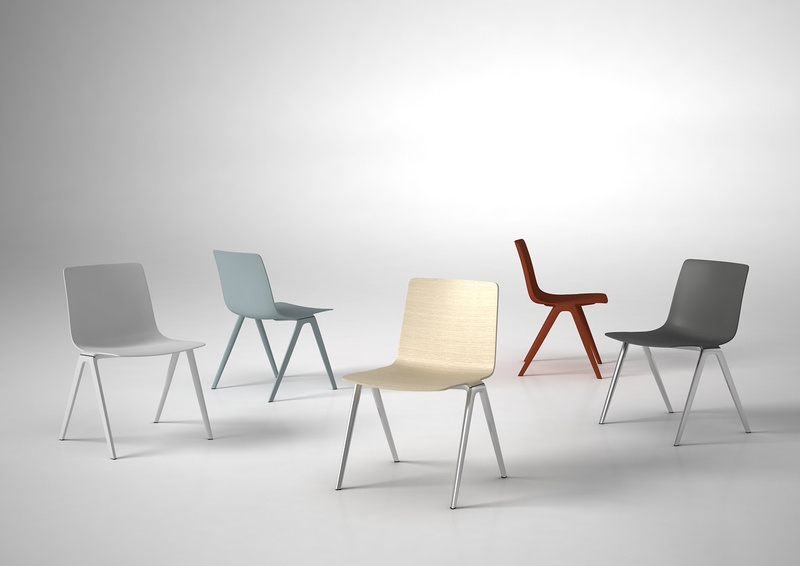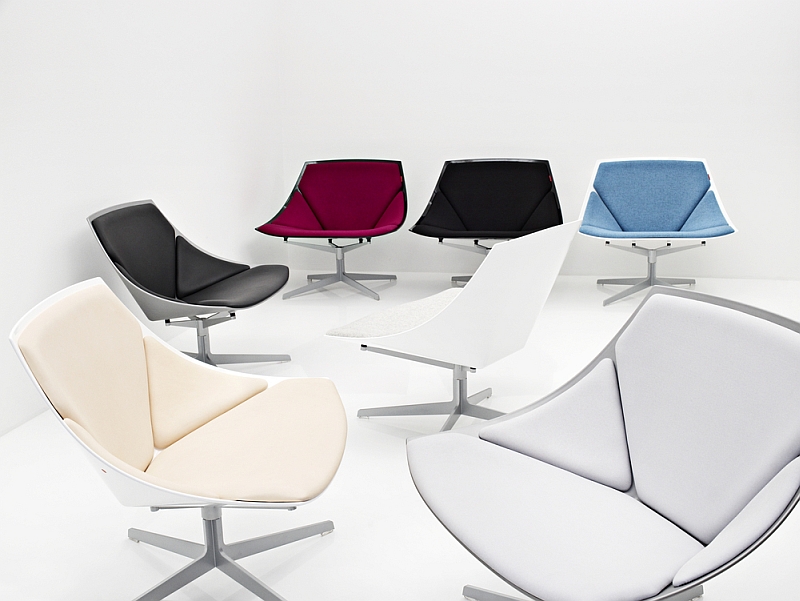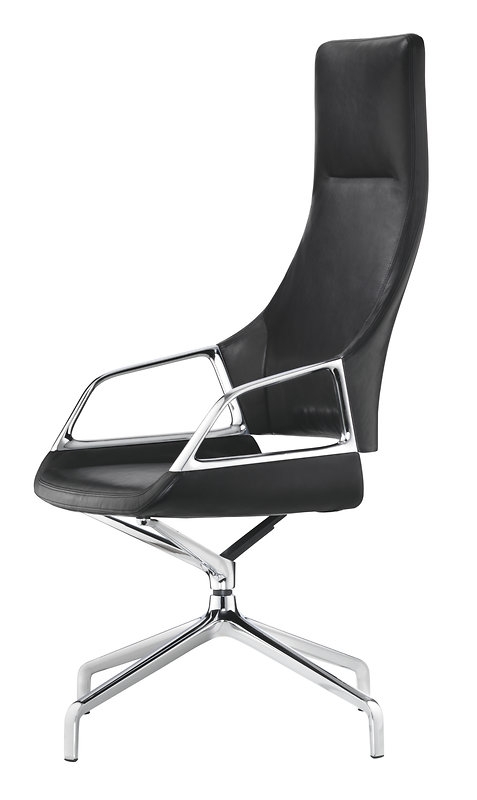Belux | Designer | Exhibitions and Shows | Fritz Hansen | Interview | orgatec | Producer | Product | Thonet
Since establishing their own design studio in Stuttgart in 1994 Markus Jehs and Jürgen Laub have quietly gone on to become two of the busiest and most successful German product designers of their generation. With a client portfolio that includes the likes of Thonet, Wilkhahn, Fritz Hansen, Authentics or Belux Jehs+Laub are just at home with designing office furniture as with domestic furniture, lighting and accessories.
And in a career splattered with international awards the highlight unquestionably came when the pair won the inaugural, and sadly since then not repeated, Moormann Bookinist Cup.
We know it's a while here, but back at Orgatec 2012 Jürgen Laub and Markus Jehs launched a new product with German manufacturer Brunner: the A-chair, a modular all-purpose seating system that Brunner pushed with the fact that they had invested some one million Euros in the development of the project.
At that at a time of, relative, financial insecurity.
At Orgatec we took the opportunity to speak with Markus Jehs and Jürgen Laub and started by asking if they approach office furniture projects differently from domestic furniture projects........
Jürgen Laub: No, not at all, we approach both in the same way, which is that we design objects so that they appeal to us, while at the same time placing ourselves in the position of the end customer with their requirements on and demands for the object.
Markus Jehs: With the "end customer" it's important to stress that is not just the person who eventually buys the object, we also have the manufacturer who commissioned the work and then one can't forget the sales and distribution network, they also have requirements and must be able to cope with the product. All this needs to be considered, but we've been doing this for "a couple of years now" and understand how it all works.
(smow)blog: With office furniture, is one as a designer limited in what one can do in terms of form or aesthetic on account of the necessary functionality.
Jürgen Laub: Office furniture is certainly more of a challenge in that respect, and yes there are limits, for example, if you know that a chair shouldn't cost more than X Euro then there are potential limits as to what you can do in terms of using new materials. However, we are in the fortunate position that with many of our partners such limitations don't apply, and when we have a partner like Brunner who are prepared to invest one million euros in the technology to create the chair, then we know we can go to the limits of what is possible and that gives us enormous freedom in terms of developing the form.
(smow)blog: One million euros. Do you feel the pressure from such a figure or can you ignore the numbers?
Markus Jehs: No there's no pressure, not least because at the beginning such numbers doesn't exist. In the course of the product development one invariably reaches moments where such figures arise and questions are posed; and then you consider if it is necessary and sensible and for all if the product has the potential to recoup the investment. And with the A Chair we have a product that offers so many potential configurations and has so many possible uses that we all felt confident with the investment.
(smow)blog: Feeling confident with an investment is obviously largely determined by prevailing economic factors.You work with almost all major German contemporary furniture producers. Are you able to assess the current market situation or is that all something a long way from yourselves and your atelier....?
Jürgen Laub: We hear a lot, but we ourselves haven't noticed anything. That said what we are aware of is that in the last couple of years the market has become somewhat volatile, one day all is going well, the next it's all doom and gloom, and then it's back to sunny. Ten, twenty years ago that was different, everything was much more stable. But nowadays producers are increasingly looking to win market share from one another, and at the end of the day part of our job as designers is to ensure that success. It's easy to think that as a designer you're just paid to produce attractive or functional objects, but ultimately manufacturers commission us to produce successful products.
(smow)blog: Moving away from your work, in 2011 you famously won the Moormann Bookinist Cup. We didn't get the chance to ask then, but what was the secret of that fantastic success?
Markus Jehs: We were so boring, we just drove at a steady speed. I drove, Jürgen pushed, and my biggest fear was crashing at the first corner and so we set off very cautiously and that's why we won.
Jürgen Laub: Which means we only won because I pushed him properly!
(smow)blog: Which sounds like a nice metaphor for the design relationship, you've only come so far because the one pushes the other properly!
Jürgen Laub: Genau!
(smow)blog: And briefly to end, your based in Stuttgart. Can one describe Stuttgart as a design city?
Markus Jehs: What we like about Stuttgart is that it is the middle of Europe and so one can quickly reach any necessary destination. It's also culturally a very rich city, OK the architecture is perhaps not the most inspiring, after the war, as with many German cities, errors, big errors, were made. But all in all Stuttgart is a creative city not just in terms of design or art but also general tinkering, exploring, finding solutions to problems and developing new ideas through experimentation. Which is something that I think defines Stuttgart.
Jürgen Laub: Stuttgart is also more professional than, for example, Berlin. In Stuttgart you find a lot less people making felt bags, but a lot more internationally active architecture and design bureaus. But in Stuttgart people don't talk so much about their success: an awful lot of creativity originates in Stuttgart but you don't necessarily know that because no one talks about it.


